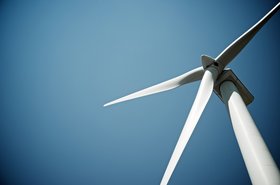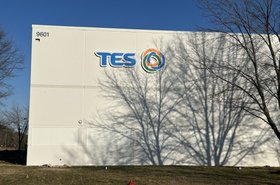Last week Equinix announced a giant power purchase agreement (PPA) in Australia, which breaks new ground for the company. It doesn’t come into force till 2029, but it is Equinix’s first in APAC, and the company tells me it will be enough to push them over the line to get to 100 percent renewable energy coverage by 2030.
The trouble is, that’s not strictly true.
Equinix will still be using a whole lot of “dirty” electricity. And authorities tell me that this sort of PPA will very likely not even provide a net benefit to the electricity grid.
This is not just a problem for Equinix. A lot of data center industry players are burnishing their green credentials with PPA contracts, notably including Amazon, which claims to be the world’s largest buyer of renewable energy.
Data center operators have become the biggest global purchasers of PPAs, and many including Amazon say this gets them towards net-zero. But a lot of these claims are regarded as a “fraud” by electricity industry commentators.
Volume matching doesn't add up
Too many PPAs are based on “volume matching.” A large customer buys a certain amount of electricity, and pays to have the same amount of electricity generated at a renewable source, such as a wind farm or solar power plant.
That sounds great, doesn’t it? But Gerard Reid of energy finance firm Alexa Capital, says: “Volume matching is, basically, a fraud.”
That’s a blunt way of phrasing the conclusion by Princeton University’s Zero Lab, that volume-matching PPAs “drive little to no change in system-level CO2 emissions.”
There’s an obvious problem: the 151MW of wind power paid for by Equinix will only be available when the wind blows, while Equinix’s data centers will operate round the clock. So on still days, they’ll be consuming dirty electrons.
But there’s more to the problem. When an operator buys a PPA, it may just “displace” other investments, paying for capacity that would have been generated anyway.
By buying renewable electricity and using dirty electricity, people buying volume-based PPAs are “distorting the market,” says Reid. They are buying cheap, easy green electricity, and pretending it addresses the electricity which is hard to decarbonize.
Right now, variable renewable electricity has peaks, and at those peaks it is worthless. It is dumped or “curtailed.” Buying a volumetric PPA simply funds more of that wasted green power. The grid needs green electricity to use at night, or when there is no wind.
Because of volume-based PPAs, says Reid, “there's no economic incentive for someone to build renewables to fill those gaps.”
We’ve known this for a long while, and there are ways to do better. Microsoft, for instance, simply buys more renewable energy to cover the times when it is using carbon-intensive power, and both Microsoft and Google are moving towards 24/7 hourly matched renewable energy.
Google has signed up for a Blockchain-based system from carbon accounting firm Flexidao, that matches energy use with renewable power through the EnergyTag system, We’ve heard from Giacomo Bravaccini of Flexidao about ways to move towards 24/7 matching, and Flexidao CEO Simone Accornero came on our podcast to tell us more.
Equinix seems to be aware of the shortcomings of volume-based PPAs. We mentioned the issue to Equinix’s VP of sustainability Christopher Wellise, and he told us: “Clearly, the sun is not always shining, and the wind is not always blowing. But if you're producing the same number of green electrons as you are consuming, you know, that's that sort of ‘definitionally’ 100 percent renewable.”
What he means is that Equinix won’t be using 100 percent renewable electricity - but it can still make that claim to be 100 percent renewable because it is following the definition used by RE100, a group of large organizations that have promised to move to net-zero (RE100’s members also include Microsoft and Google).
Net-zero definitions need an update
“By the definition of RE100, renewable does not necessarily mean 24-by-seven matching,” he said. “The definition of 100 percent renewable is evolving over time, and the markets are evolving.”
Wellise doesn’t rule out using 24/7 hourly matching in future: “Everything's on the table in terms of what we're considering right now,” he says. “I understand that 24/7 is on the roadmap for some of the players in the industry.”
The bottom line seems to be that adopting 24/7 hourly matching would cost more, and there’s no financial incentive to make that move, as long as organizations like RE100 go on pretending that volume matching is good enough. You can buy green credentials at RE100 with cheaper PPAs, so why go the extra mile?
Until PPAs move to hourly matching, there’s no incentive to add renewable power and storage that will cover the most carbon-intensive periods on the electricity grid.
And organizations like Equinix won’t have any incentive to make the shift to a PPA that genuinely supports decarbonization until industry organizations like RE100 start to make that distinction, and push people to PPAs that genuinely support decarbonization.
RE100 has been criticized by Flexidao and, implicitly, by McKinsey, for not going far enough.
We think it is time that 24/7 PPAs became the standard for decarbonizing power.









